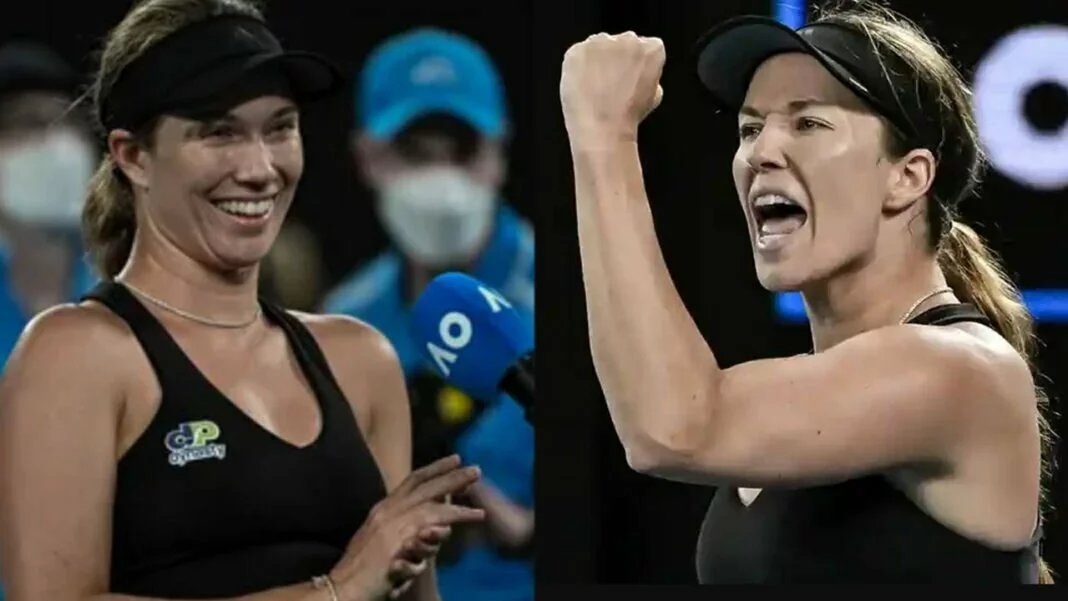Danielle Collins of the United States and Ash Barty of Australia will face one another in the Australian Open final in Melbourne on Saturday. It will be the first time Collins has reached a grand slam final and she faces the world number one for the first time. Despite being the clear favorite, Barty needs to hold off Collins, who is in the best form of her career.
Having reached the final is a culmination of hard work and perseverance for Danielle Collins, 28, as her high-risk, aggressive game is finally paying off as a result of years of hard work. Danielle Collins is also feeling more optimistic and focused since recovering from surgery last year to treat endometriosis. Her semi-final victory over Iga Swiatek, one of the pre-tournament favorites, was a testament to Collins’ physical recovery. “It finally got to the point where I couldn’t deal any longer with it physically or mentally. Once I was able to get the proper diagnosis and the surgery, I feel like it’s helped me so much – not just from a physical standpoint but from a mental standpoint.” Danielle Collins has a sterling 32-7 singles record since July.
The emergence of Collins at the top of the sport is contrary to prevailing norms in women’s tennis. The Williams sisters, Sofia Kenin, Sloane Stephens, Madison Keys, and Coco Gauff are among her peers who achieved a high level of success or renown at a young age, whereas Collins is coming into her own in her late 20s, which is normally late middle age for a woman playing tennis. Danielle Collins turned pro at the age of 22, following a stellar collegiate career at the University of Virginia, during which she won two NCAA titles.
For fans, Collins has always been one of the most enjoyable players to watch because of her all-court, go-for-broke game. Although many of the high-ranked women have powerful groundstrokes, Collins has a powerful forecourt game, which allows her to finish points quickly. Danielle Collins’ on-court decision-making was lacking, which was partly to blame for the fact that her game took longer to mature into the top-tier player it has become today. Nevertheless, she has combined all-court ability with strategic acumen and increased mental focus, transforming herself into one of the most dangerous players on tour. The full arsenal of shots Collins possessed on Thursday was on display during her comprehensive defeat of slam champion Swiatek. (On the men’s side, Denis Shapovalov is going through a similar transformation.) The win may have been the finest of her career.
As in the semi-finals, Collins has played well against Barty and would like to continue that performance in the final. This task will be much harder. As noted above, this is a final that offers as many contrasts as is possible. While Barty became a pro at 14, Danielle Collins did not turn pro until she was 22; Collins plays with exceptional power, while Barty uses incredible spins and angles to thwart her opponents; Barty is relatively short by women’s tennis standards, at 5ft 5in, but Collins is 5ft 10in. Played four times, Barty currently leads the rivalry 3-1. Collins won their last match, which took place at an Australian Open tune-up tournament in 2021.
Especially for Collins, expect him to make a strong service return to win the match. In spite of her lack of power, Barty will still be among the best servers in women’s tennis – if not the best – with a simple, natural motion and a gift for hitting balls into the corners of the court. During this Australian Open, Barty held 63 consecutive service games.
Collins will have to take risks with her return, especially on her second serve. Danielle Collins defeated Swiatek in the semifinals with a staggering 86% return point victory (including seven all-out winners). Danielle Collins must dominate court-positioning early on in the game before Barty can go on the defensive. During Barty’s second delivery, Collins is likely to move forward into the court.
Will the ever-present factor of nerves in any slam final determine the winner? There will be a lot of pressure on Barty, as well as the home crowd’s support. The enormously affable home favorite knows what she’s up against: an Australian woman hasn’t won a home Slam since Chris O’Neil in 1978 (the last Aussie man, Mark Edmondson, won in 1976). She may well decide the outcome of the match based on how she handles expectations.
Whatever happens on a muggy Melbourne Saturday evening, it looks like a contest that’s sure to be entertaining.



















